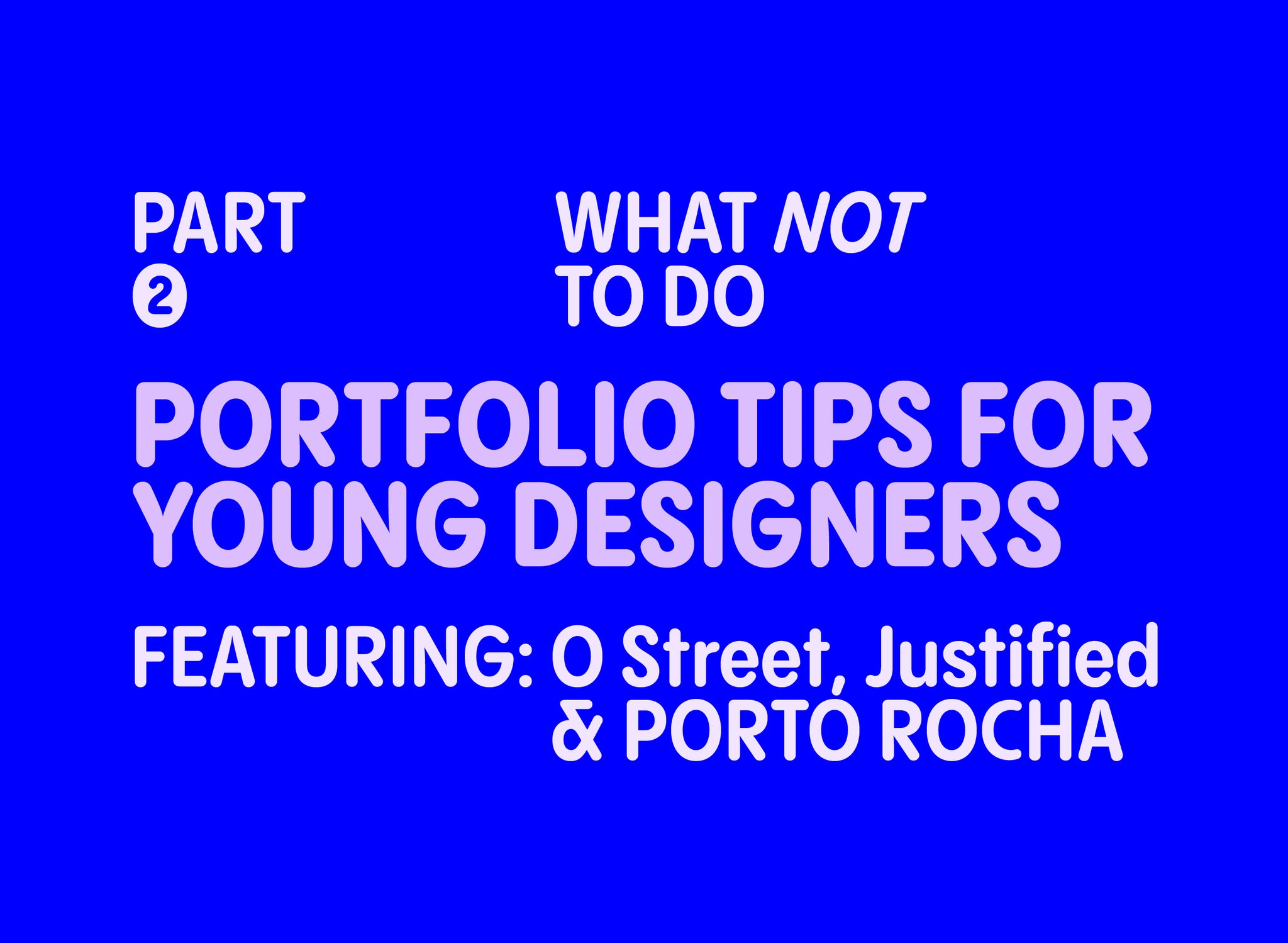One of the most universally daunting tasks for creatives is actually getting your work together. No matter if you went to university or are self-taught, making a portfolio, website, Instagram, or email (or really anything self-referential) is always tricky – especially if you’re a young creative, junior designer or someone just starting out.
Often it’s hard to know where to start, and putting your portfolio together can be an isolating, demoralising task. However, it doesn’t have to be that way. Sometimes you just need a tip or two to get going. And we think it’s just as useful to know what NOT to do, as what you should do.
So, with that in mind, we’ve turned to some fascinating, insightful folk who know a thing or two about the creative industry. Speaking with NYC-based design studio PORTO ROCHA, Glasgow’s O Street creative practice and London-based design, technology and design studio Justified, we’ve got together our top tips from our industry experts on what to keep in mind when getting your portfolio together.
Welcome to part two, the DON’Ts.

We’re all guilty of staying in our own echo chambers in one way or another, and design is certainly no exception. As PORTO ROCHA’s senior designer Gabriela Carnabuci tells us, “when starting new projects, it’s great to look towards design for inspiration, but it’s also good to be cautious of not getting stuck in a design bubble,” and potentially change the angle of your research and influence. “Look for inspiration out of design,” Carnabuci recommends, “as it can really help push the work into a new space.”


“Try not to always play it safe,” Carnabuci simply puts, praising the contemporary means readily accessible to most creatives. “New tools and media are getting released constantly,” she adds, “and it’s a great time to push boundaries and experiment with new design codes,” a sentiment similarly shared by Justified’s Creative Director, Joshua Ogden. “Please please don’t be afraid to show tests, WIP and unfinished projects,” Ogden tells us, “there are often gems in there that someone with a bit more experience may be able to get excited about!”
A word of caution, however, as Carnabuci explains, “your portfolio doesn’t necessarily need to include every project you’ve worked on,” suggesting that you champion the work you could most passionately and effortlessly discuss. Basically, don’t add projects you don’t like. Instead, “highlight the projects that you feel are the strongest,” Carnabuci summaries, “and best represent you as a designer.”


Discussing what junior designers should avoid in designing their portfolios, George Creese, Mid-weight Designer at O Street, immediately lists “typos and portfolios that are really long and extremely detailed” as big red flags. “Try to make the paragraph that explains each project as succinct and clear as possible,” Creese suggests, explaining, “it is easy to get quite blinkered when you’ve been working on a project for three months and forget that the person you’re sharing it with has never seen it before.”

With this in mind, understand that the person looking at your work is looking at it with totally fresh eyes and, therefore, it’s best to summarise the project in a few sentences – drawing them in with the ‘hook’ or concept behind the work – and verbally expand on the project, if necessary, in person. “Don’t get bogged down in the minutiae of the project or the twists and turns of its development,” Creese notes, “just communicate that core insight as quickly as possible.”


We’ve established the benefit of restraint, and the design and presentation of the portfolio itself are no exception. “Don’t create a jarring identity for yourself that overshadows all the work you are presenting,” Creese concludes, ensuring the portfolio’s focus is highlighting the work itself. Similarly, Carnabuci raises the practical implications and required considerations of sharing your portfolio. “If your portfolio is hosted online, make sure the URL, links, and any media are loading quickly and properly,” she explains, emphasising the file size of the portfolio. “If your portfolio is embedded into an email, try to keep it to about 10mb,” Caranbuci concludes, “and with either scenario, avoid using any image that is low-resolution.”








